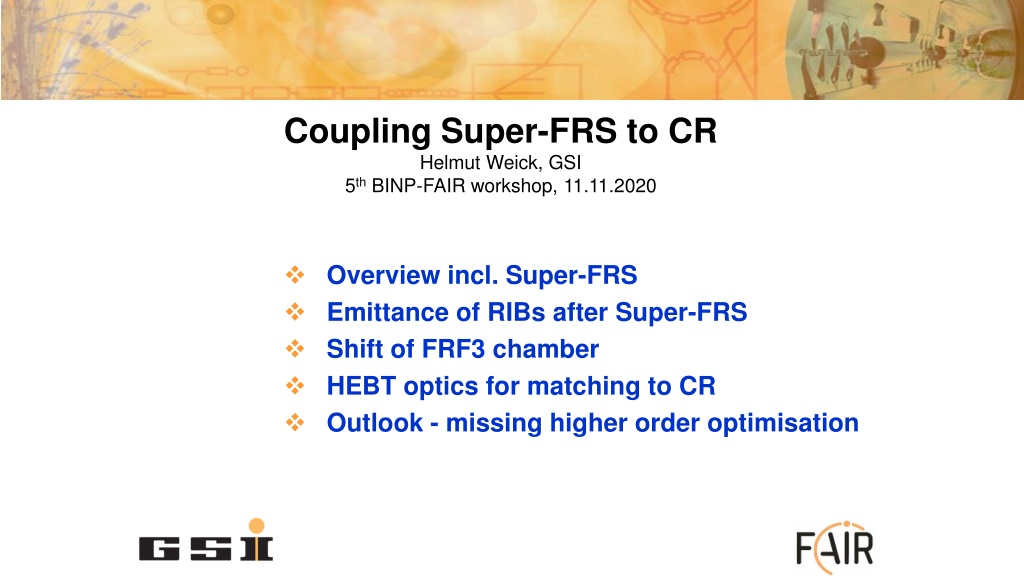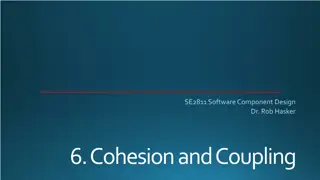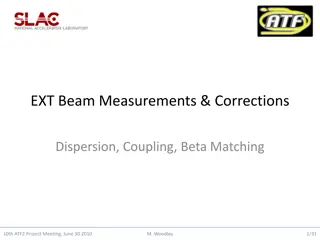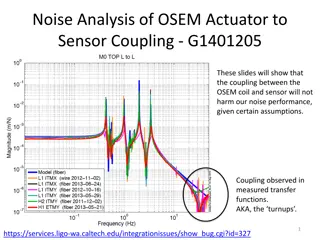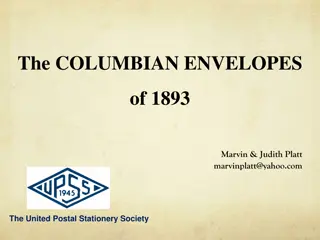Overview of Super-FRS Coupling to CR and Beam Envelopes
Overview of the Super-FRS coupling to CR including details on beam envelopes, acceptance after target Super-FRS, emittance of RIBs, and outlook for optimization. The content covers floor coordinates verification, beam envelopes at various points, ion reactions like fission and fragmentation on C-targets, and adjustments required for different ion beams. Changes in the position of FRF3 chamber and challenges faced are also discussed.
Download Presentation

Please find below an Image/Link to download the presentation.
The content on the website is provided AS IS for your information and personal use only. It may not be sold, licensed, or shared on other websites without obtaining consent from the author. Download presentation by click this link. If you encounter any issues during the download, it is possible that the publisher has removed the file from their server.
E N D
Presentation Transcript
Coupling Super-FRS to CR Helmut Weick, GSI 5thBINP-FAIR workshop, 11.11.2020 Overview incl. Super-FRS Emittance of RIBs after Super-FRS Shift of FRF3 chamber HEBT optics for matching to CR Outlook - missing higher order optimisation
Overview Floor coordinates verified, end of Super-FRS to CR septum fits. Acceptance after target Super-FRS: A = 38 mrad, B = 20 mrad, p/p = 2.5% Initial emittance depends on spot size. For spill of 5e11 U/spill we must use large spot, otherwise target will not survive -> 3.5 x 6.8 mm2 less for lighter ions, Xe: -> 2.0 x 5.0 mm2. 20 Tm ~1500 MeV/u Final acceptance increased by degraders, coupling of longitudinal and transverse emittance. max. 13 Tm 740 680 MeV/u
Super-FRS Beam Envelopes FPF2 FMF2 FPF4 FPF0 FRF3
1500 MeV/u 238U -> fission on 4 g/cm2 C-target -> 132Sn, 2 achromatic degraders -> 740 MeV/u elliptical beam spot size on target with x* y = 3.87 mm x 8.94 mm MOCADI simulation with 1st order optics but real reaction kinematics and degrader straggling b [mrad] a [mrad] 200 mm mrad 200 mm mrad x [mm] y [mm] y [mm] x [mm] a [mrad] b [mrad]
1500 MeV/u 238U -> fragmentation on 4 g/cm2 C-target -> 216Pb, 2 achromatic degraders -> 740 MeV/u elliptical beam spot size on target with x* y = 3.87 mm x 8.94 mm MOCADI simulation with 1st order optics but real reaction kinematics and degrader straggling a [mrad] b [mrad] 200 mm mrad 200 mm mrad y [mm] x [mm] y [mm] x [mm] b [mrad] a [mrad]
no need to cut, but will close slits for better separation momentum distribution cut by slits in middle of Super-FRS 216Pb 132Sn p/p -1.5% +1.5% p/p Size and also shape of distribution depends on reaction Large emittance with large beam spot on target for full intensity U beam, less with lighter beams like Xe. Very light ones not used for CR. Matching will need some adjustment for different beams.
Position of FRF3 Chamber Moved by 2.5m to center between quadrupole triplets. Conflict with cable trays and crane, but will be solved. x-slit SC-multiplet FREXQS.. SC-multiplet FRF3QT.. FRF3DK1 wall 5.4m 5.4m
HEBT Beam Envelopes all TCR1 quads with r=15cm possible, even for TFC1, only FREXQS04 larger Different versions by Hans Geissel and Erika Kazantseva FREX TFC1 CR TCR1
Dispersion from Degrader Different energy-loss for ions of other Z is wanted However, also statistical energy-loss straggling, p/p ~ 0.1%. System cannot be matched to dispersion from target ( p/p = 1.5%) and to dispersion from degraders at the same time, but amplitude must be limited. separation
Conclusion + Outlook After a small adjustment at end of Super-FRS good transmission and matching to the 6 parameters of the CR can be achieved (both RIB and isoc. mode). Higher order mode still needs improvement. The old strong sextupole corrections in Super-FRS lead to deformed phase space, rather a triangle than ellipse. It is not a problem of HEBT. Thank you to: Sebastian Ratschow, Hans Geissel, Erika Kazantseva
